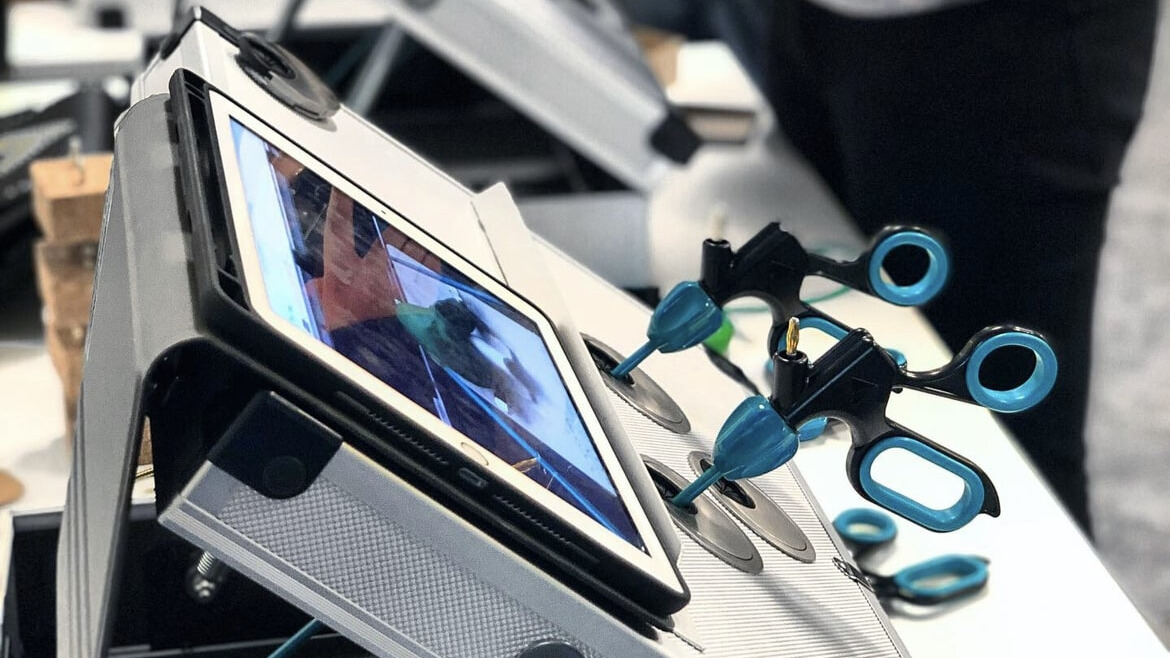Gold Coast University Hospital’s Laparoscopic Simulator Program integrated surgical advanced virtual reality technology with a comprehensive credentialing process. This innovative approach was designed to ensure that trainees not only acquired essential laparoscopic skills but also effectively translated these abilities into real-world clinical success, thereby optimizing operating theatre efficiency and enhancing patient care
The efficient utilization of operating theatre time is critical, and requires proficient and safe surgeons. While laparoscopic simulators hold the potential to enhance trainee surgeons’ abilities, the translation of these improvements to clinical outcomes is often not realized.

Gold Coast University Hospital (GCUH) in Queensland, Australia invested in a laparoscopic virtual reality simulator (LapSim® 360, Surgical Science, Sweden) with the goal of optimizing operating theatre efficiency. The GCUH LapSim VR program aimed to focus on ensuring the transfer of skills acquired in the virtual environment to real-world surgical settings. Beyond the acquisition of the LapSim VR simulator, the program adopted a multifaceted strategy, integrating elements such as credentialing, an online module and take-home laparoscopic box trainers. The emphasis was not only on the simulation technology itself but on the strategic integration of various educational components.
Key Strategic Elements of the Program
Equipment access: the program secured a LapSim VR machine through a local health service innovation grant and provided take-home laparoscopic box trainers.
Faculty Support: a dedicated simulation technician and leading gynecologist provided essential support and guidance for the program.
Instructional Design: guided by a mastery learning approach, the program utilized incentives and support mechanisms to encourage trainee engagement.
Online module: developed to guide trainees on LapSim VR use and the take-home laparoscopic box trainer program
Structured Training Sessions: weekly and monthly training sessions provided dedicated time for LapSim VR training incorporating mentoring, gamification and test-enhanced learning to enhance trainee engagement
Credentialing: the core tenant of the program
Trainees were required to achieve a pre-specified level of competence prior to being granted ‘primary operator’ status in real surgical cases. This assumed that credentialing would lead to safer, faster procedures and provide the trainees clear goals and well-defined metrics to strive for.
While many programs typically view competence as an endpoint, we challenged this approach by making it the initial step and primary goal.
Measure the program’s impact
To comprehensively assess the program’s impact, an outcome logic model served as a guiding framework. This model included a nuanced evaluation of effectiveness, feasibility, efficiency, and overall impact on the health service. The outcome of this approach may be more useful to comprehensively evaluate simulation programs than the traditional approaches that seek linear causality. The LapSim VR program did result in a significant reduction in mean operative time of 14 minutes for uncomplicated laparoscopic salpingectomies in our institution between 2020-2021. Despite positive outcomes there were some challenges in our program including trainer trust of simulated laparoscopic credentialing that require further research.
Conclusions
Introduction of a laparoscopic simulation VR credentialing program at our institution demonstrated tangible benefits, showcasing the potential for such programs to significantly improve operating theatre efficiency. Our study highlights that educational programs should aspire to translational, patient-focused outcomes in their design and delivery. Credentialing may be a useful strategy to support clear and transparent communication in surgical goal setting, competence assessment and directed feedback. Adopting an outcome logic model also offers a promising approach to evaluate and complement translational simulation education programs more comprehensively.
If you want to learn more you can read the entire study in the International Journal of Healthcare Simulation.
READ ALSO












































